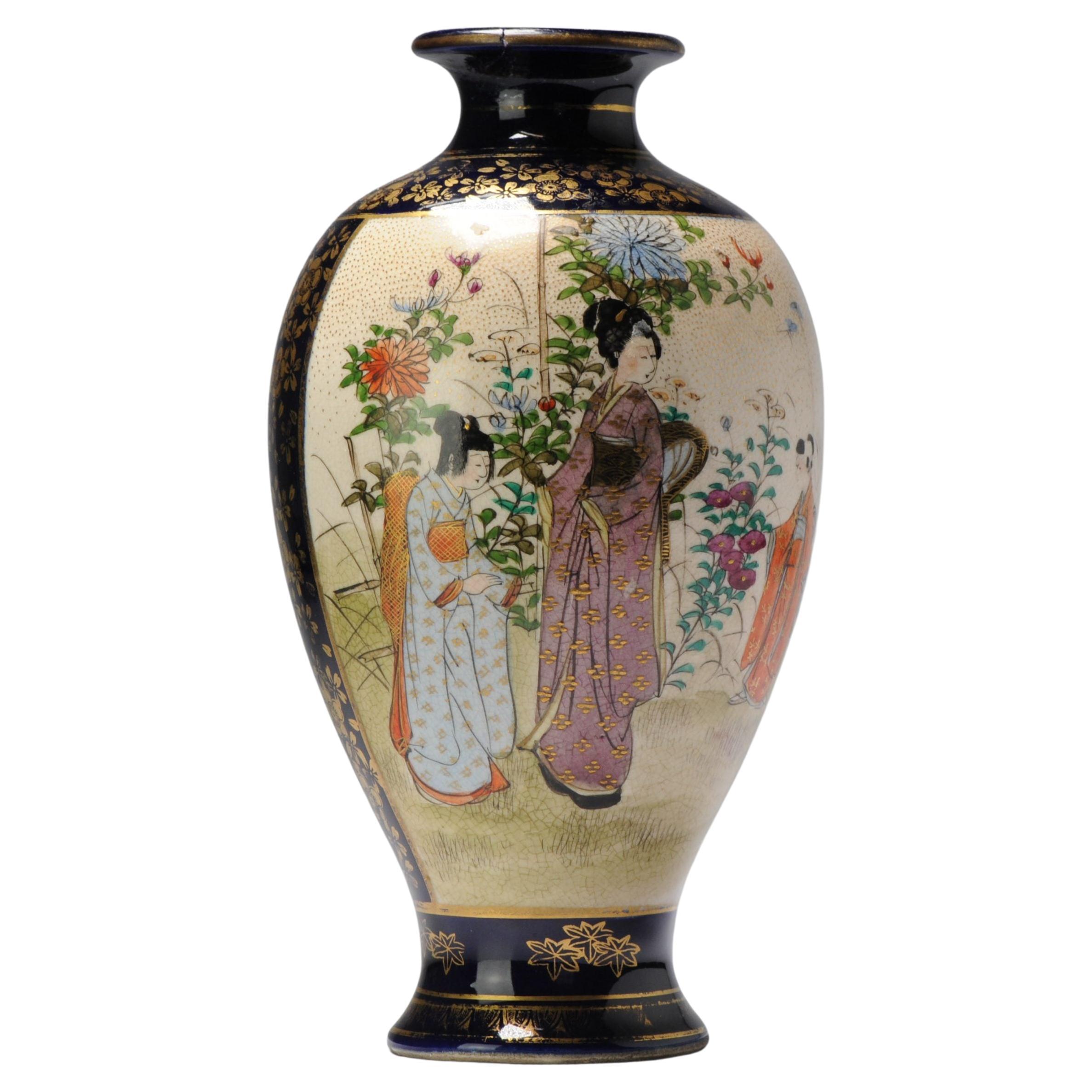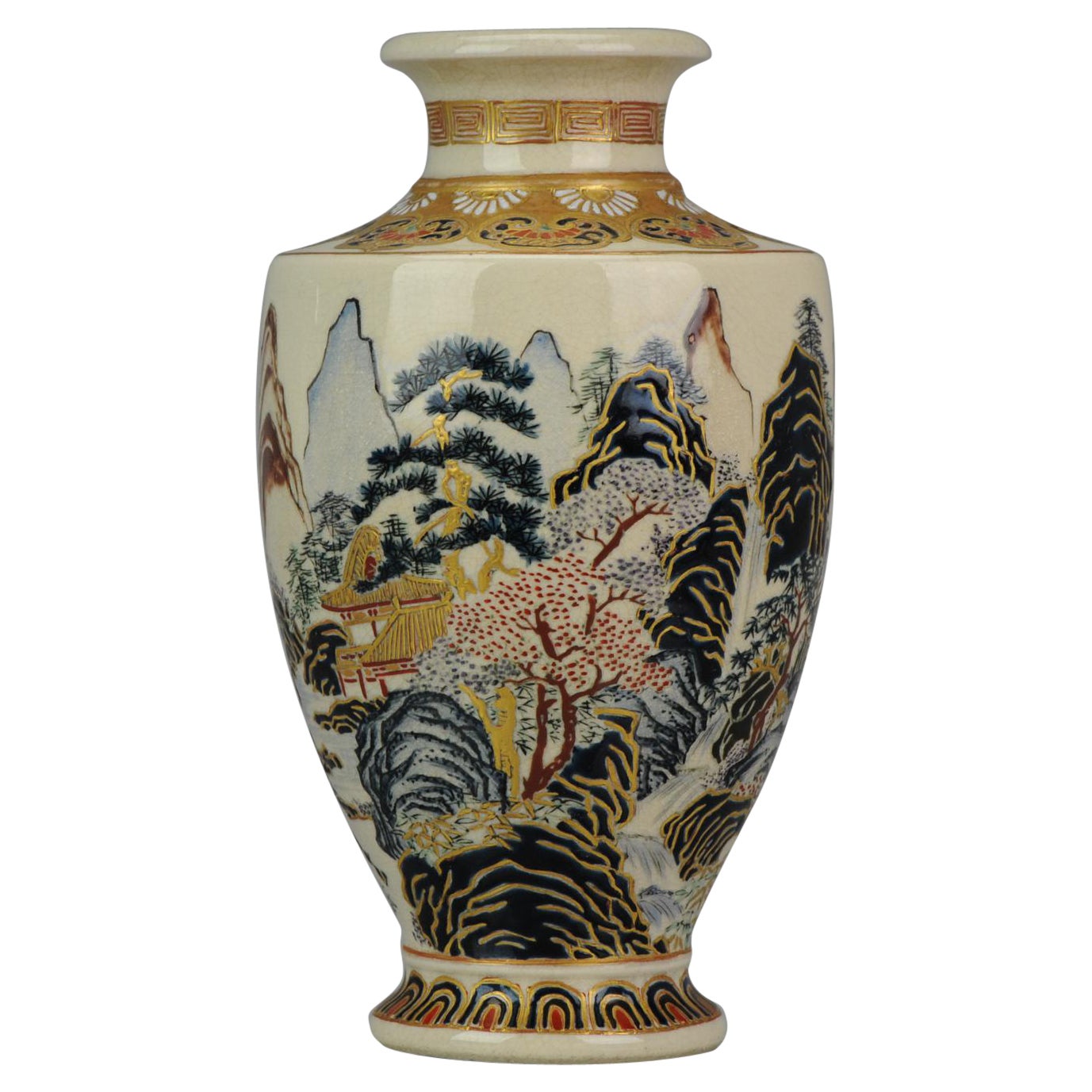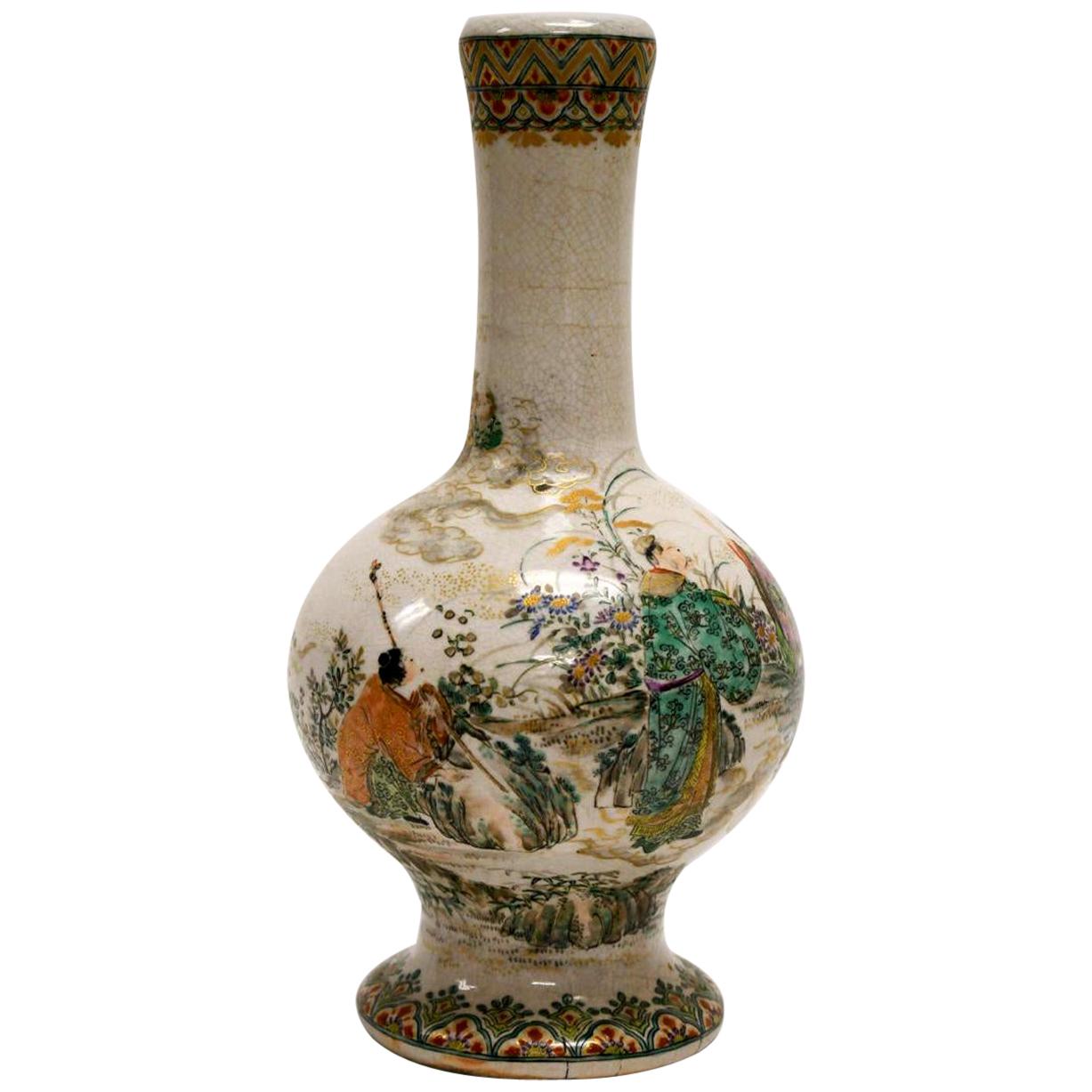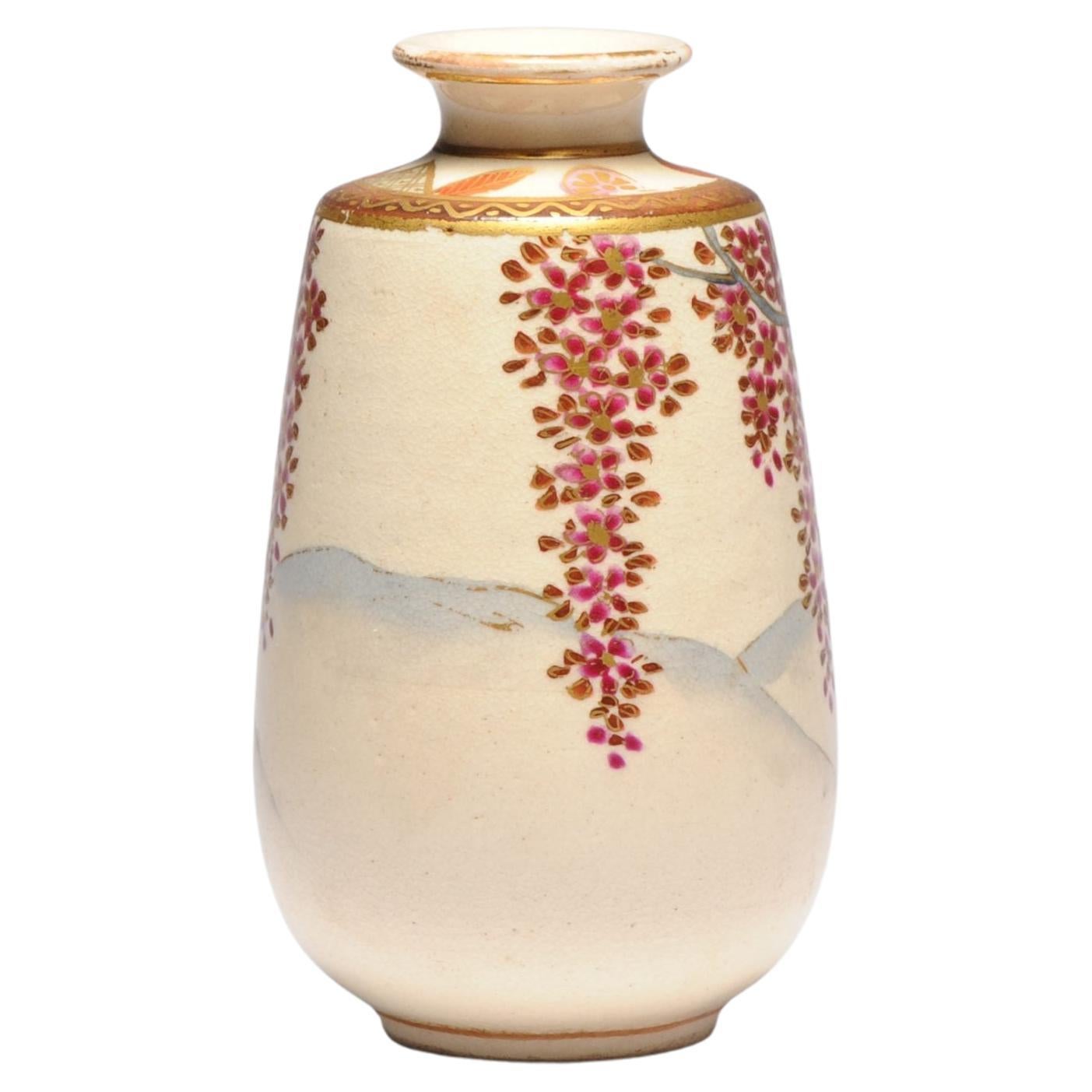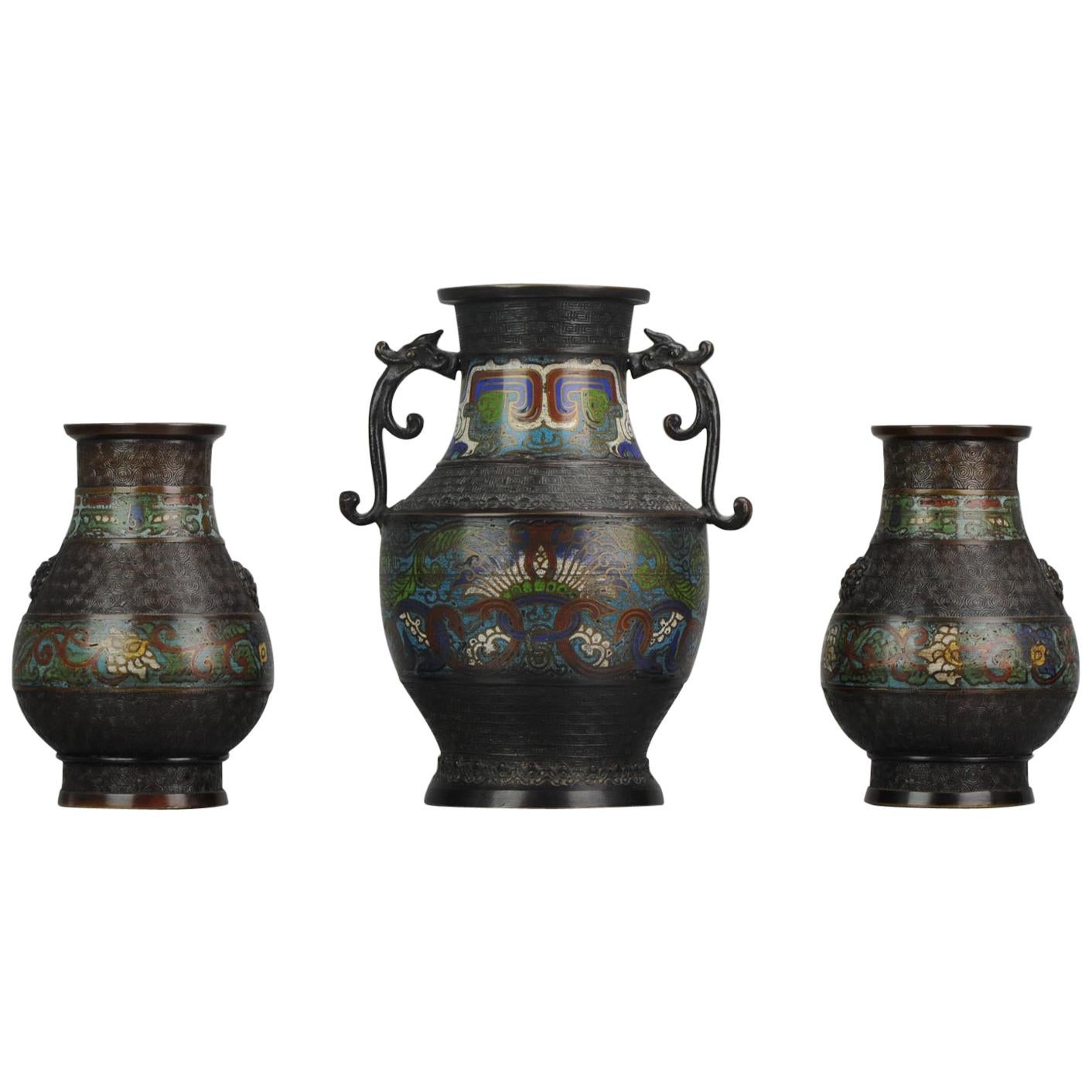Items Similar to Large 1900-1930 Satsuma Antique Garniture Japanese Colorful Vases, Japan
Want more images or videos?
Request additional images or videos from the seller
1 of 21
Large 1900-1930 Satsuma Antique Garniture Japanese Colorful Vases, Japan
About the Item
Great pieces, nice interior addition.
Condition
Biggest vase both lid and vase were restored, foot also. Small vases in good condition, only a chip to nose of one of the dogs. Size: 200-350mm high.
Period
circa 1900.
- Dimensions:Height: 338.63 in (860.1 cm)Diameter: 0.04 in (1 mm)
- Sold As:Set of 3
- Style:Showa (Of the Period)
- Materials and Techniques:
- Place of Origin:
- Period:
- Date of Manufacture:1900-1940
- Condition:Repaired. Wear consistent with age and use. Biggest vase both lid and vase were restored, foot also. Small vases in good condition, only a chip to nose of one of the dogs. Size 200-350mm high. Period.
- Seller Location:Amsterdam, NL
- Reference Number:1stDibs: LU4863222849382
About the Seller
5.0
Gold Seller
These expertly vetted sellers are highly rated and consistently exceed customer expectations.
Established in 2015
1stDibs seller since 2019
158 sales on 1stDibs
Typical response time: 8 hours
- ShippingRetrieving quote...Ships From: Amsterdam, Netherlands
- Return PolicyA return for this item may be initiated within 14 days of delivery.
More From This SellerView All
- Large Satsuma Antique Garniture Japanese Colorfull Vases Japan, 1900-1930Located in Amsterdam, Noord HollandGreat pieces, nice interior addition. Additional information: Material: Bronze & Cloisonne, Metal Japanese Style: Satsuma Region of Origin: Japan Period: 19th century Age: 19/20 C O...Category
Antique 19th Century Japanese Garniture
MaterialsBronze
- Antique ca 1900 Japanese Satsuma vase Richly Decorated MarkedLocated in Amsterdam, Noord HollandDescription A Japanese Satsuma vase and cover marked base Condition Overall Condition: 1 restuck chip to rim. Size 190mm high Period 19th century Meiji Periode (1867-1912).Category
Antique 19th Century Japanese Meiji Ceramics
MaterialsPorcelain
- Antique ca 1900 Japanese Satsuma Gessan vase Japan Mountains Ruyi CeramicsLocated in Amsterdam, Noord HollandDescription A pair of Japanese Satsuma 'processional' vases, Meiji period Of ovoid form with everted rims, each painted with a procession of figures in traditional robes, some carry...Category
Antique 19th Century Japanese Meiji Ceramics
MaterialsPorcelain
- Antique ca 1900 Japanese Satsuma Hotoda Mini Vase Richly DecoratedLocated in Amsterdam, Noord HollandSharing with you is this nice satsuma miniature vase decorated with wisteria. Marked: Hotoda Condition Overall Condition Perfect. Size 91mm high Period Meiji Periode (...Category
Antique 19th Century Japanese Meiji Ceramics
MaterialsPorcelain
- Garniture Antique circa 1900 Japanese Bronze Vase Flowers Home DecorationLocated in Amsterdam, Noord HollandA very nice garniture of bronze Vases with enamels. Good for home decoration. Condition / / Overall condition close to Perfect, minimal age signs like small spots of missing e...Category
Antique 19th Century Japanese Meiji Ceramics
MaterialsBronze
- Antique ca 1900 Japanese Satsuma Vase Richly Decorated Marked MiniatureLocated in Amsterdam, Noord HollandDescription A Japanese Satsuma teapot and cover marked base, miniature Condition Overall condition restoration to rim. Size 60mm high Period 19...Category
Antique 19th Century Japanese Meiji Ceramics
MaterialsPorcelain
You May Also Like
- Japanese Satsuma Mini Vases, circa 1900Located in Delft, NLJapanese Satsuma mini vases, ca. 1900 Meiji period (1867-1912) Japanese Satsuma vases of 9.2 cm high in a conical-cylindrical shape with measurem...Category
Antique Late 19th Century Japanese Ceramics
MaterialsCeramic
- Early Japanese Satsuma Antique VaseBy SatsumaLocated in Atlanta, GAAn Satsuma ceramic stone ware vase, circa 19th century, around the end of the Edo and the beginning of Meiji period. In the form of a Classic garlic bottle whose prototype was from China, the white bodied piece is decorated with an early form of kin nishikide, the so called golden brocade, a palette of iron-red, blue, green, yellow, purple and black with golden highlight. The over glazed enamel paint shows a group of robed figures in a garden setting with a lion and three tigers. A transparent overall glaze shows very fine crackles. The design is relatively sparse with plenty of negative space in contrast to the Satsuma production from the late 19th century, when the trend became fussy and overly glitz, due to the influence by the perceived western taste for the export market. This piece may still be made for export but its pattern was more influenced by both Kyoto Pottery and the Kano school of painting compared to the export ware by the end of the 19th century onward to the early 20th century. It was believed by many that this was a result of Satsuma potters visiting Kyoto in the late seventeenth century to learn over glaze painting techniques. There are some age glaze crackles especially around the foot. The piece is not signed in keeping with the earlier production before Satsuma ceramics...Category
Antique Mid-19th Century Japanese Japonisme Ceramics
MaterialsCeramic
- Large Japanese Satsuma Ceramic Vase KinkozanBy KinkozanLocated in Atlanta, GAA large Japanese ceramic vase from the end of Meiji period circa 1890-1910s by Kinkozan (1645-1927). One of the largest studio manufacturers of the export ceramics at the time based in Kyoto. In the typical style of satsuma made at the turn of 20th century, the vase is elaborately decorated with a rather unusual kinran-de (gold paint) and green enamel highlight on a mottled brown background. The painterly decoration depicts a large seasonal floral arrangement in a circular fashion. Besides the obviously superb craftsmanship, what sets this particular vase apart from many lower quality and mass-produced pieces is its tone-on-tone color pallet that is visually somber and the small and sensitive details that heralds the change of the seasons. When the viewer goes beyond the first casual glimpse of the blossom and foliage, one would notice that on the edges of certain leaves as well as along the stalks, there accumulates a very thin layer of the white dust that represents the frost. The flower in bloom are chrysanthemums. Despite of being splendid, they are the messengers of the autumn. The large lotus leaf was subtly rendered in a bended and slightly withered manner, just past its prime. Although the lotus is still in bloom, the prominent seed pod indicates it may be the last for the season. The sentimental capture of the change of the seasons is not unusual in Japanese art. This vase poetically represents such a subtle transition from summer to fall, perhaps depicting the very first frost. The neck of the vase is also slightly unusual with two rolled rings...Category
Early 20th Century Japanese Meiji Ceramics
MaterialsCeramic
- Large Japanese Satsuma Vase by KinkozanBy KinkozanLocated in Christchurch, GBAs part of our Japanese works of art collection we are delighted to offer this finely decorated Meiji Period (1868-1912), Satsuma vase stemming from the highly regarded Kinkozan stud...Category
Antique Late 19th Century Japanese Meiji Ceramics
MaterialsCeramic
- Japanese Satsuma VaseLocated in Douglas Manor, NYJapanese Satsuma hand decorated vase.Category
Vintage 1920s Japanese Ceramics
MaterialsCeramic
- Antique Japanese Satsuma Pottery Bud VaseBy Makuzu KozanLocated in Philadelphia, PAA fine antique Japanese Satsuma pottery vase. In the form of a bud vase with a round base and narrow, tapered neck. Decorated throug...Category
Early 20th Century Japanese Meiji Ceramics
MaterialsPottery
Recently Viewed
View AllMore Ways To Browse
Hand Painted Wooden Sign
Blue And White Export
Blue Dynasty
Large Japanese Porcelain
Japanese Wooden Sign
Polychrome China
Chinese Famille Rose
Antique Asian Art Porcelain
Dynasty Porcelain
Japanese Red Porcelain
Porcelain Floral Art
Chinese Polychrome
Chinese Export Blue White
Antique Asian Ceramics The
Chinese Antique Glazed
Contemporary Japanese Porcelain
Famille Rose Porcelain
Blue And White Chinese Export

